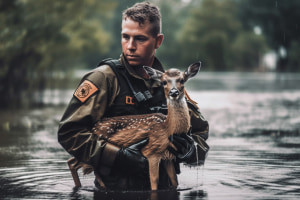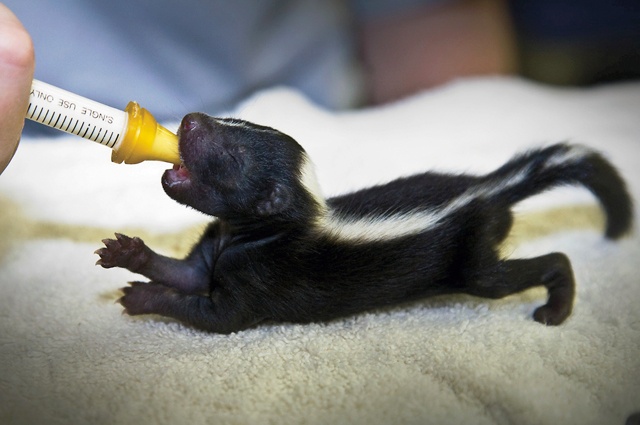Efficient Wild Animals Removal Approaches for a Peaceful Home Atmosphere
In the pursuit of maintaining a peaceful home, home owners frequently face the challenge of wild animals intrusions, which can disrupt the serenity of their atmosphere. Executing efficient wild animals elimination methods calls for a nuanced understanding of both gentle exemption techniques and preventative steps. By attending to entrance points and decreasing attractants, one can substantially reduce the chance of unwanted visitors. Nonetheless, the intricacy of these methods usually requires a better evaluation of particular techniques and the prospective need for specialist treatment. What are the key parts of these methods, and when should one think about seeking specialist aid?
Identifying Common Wildlife Intruders
Identifying typical wild animals trespassers is a vital very first step in efficient wildlife administration. Recognizing the particular varieties that frequently penetrate property and industrial spaces enables residential or commercial property proprietors and wildlife experts to apply targeted techniques for mitigating potential damages and wellness risks. Typical trespassers often include raccoons, squirrels, bats, and various types of rats and birds, each bringing distinct difficulties.
Bats, while advantageous for controlling insect populations, can end up being a problem when they roost in attics, potentially spreading out illness such as histoplasmosis. Birds, including pigeons and sparrows, commonly develop unhygienic conditions with their droppings, leading to structural destruction and health concerns - burlington animal control.
Humane Exclusion Strategies
Comprehending the common wild animals intruders is the structure whereupon effective exemption methods are built. Recognizing varieties such as birds, raccoons, and squirrels assists in designing gentle exclusion strategies tailored to particular behaviors and access techniques. Exemption is a preventative strategy intended at denying wildlife access to homes and homes, hence decreasing the demand for more intrusive actions.
The foundation of gentle exclusion includes securing potential access points. This consists of repairing holes in walls, foundations, and roof coverings, along with setting up chimney caps and vent covers. For smaller invaders like mice and bats, making use of products such as steel wool and caulk to seal gaps is essential. In addition, guaranteeing that doors and home windows are secure, and that screens are intact, can further discourage entrance.
Another key technique is using auditory and visual deterrents. Installing ultrasonic devices or motion-activated lights can discourage nocturnal wild animals. Customizing the habitat by handling food sources, such as securing trash containers and eliminating bird feeders, likewise plays an essential duty. These exemption approaches not just safeguard the home environment but additionally respect the wild animals, enabling them to flourish in their natural environments without damage.
Safe Capturing Approaches
When exclusion methods want, safe capturing approaches come to be a needed option in wild animals administration. Trapping, when implemented appropriately, offers a humane and effective methods of dealing with an instant wild animals trouble while guaranteeing minimal anxiety and damage to the pet. This approach requires an understanding of both the habits of the target types and the honest factors to consider associated with wild animals handling.
These catches have to be inspected often to prevent unnecessary stress and anxiety or injury to the captured wild animals. It is essential to adhere to regional regulations pertaining to trapping and moving to make certain compliance with legal criteria and wildlife preservation concepts.
In addition, bait selection and positioning are vital components in guaranteeing effective trapping. Bait ought to be selected based on the nutritional preferences of the target types and tactically positioned to lure the pet right into the catch. As soon as entraped, the animal needs to be taken care of with care, utilizing protective equipment if necessary, to facilitate safe transportation and release, thus preserving a calm home and a balanced environment environment.
Preventative Home Alterations
While risk-free trapping techniques deal with instant wildlife concerns, long-term services typically involve preventative home adjustments to deter pets from going into human areas. Executing these adjustments not just boosts the safety and security and convenience of your living environment but additionally decreases the likelihood of future wildlife invasions.
A critical facet of preventative approaches is sealing prospective access points. This involves evaluating and fixing any kind of spaces or splits in the foundation, walls, and roof, as these can come to be access paths for wild animals. Installing chimney caps and repairing broken vents can avoid birds, bats, and rats from gaining access. Likewise, safeguarding doors and windows with weather removing and fit together displays includes an additional layer of security.
Landscape design alterations can additionally function as reliable deterrents. Trimming tree branches that overhang the roofing system and page removing particles stacks can get rid of paths and environments that draw in wild animals. Maintaining a clean yard by protecting trash can and garden compost stacks inhibits scavengers such as opossums and raccoons.

When to Call Experts,##.
Professional intervention becomes crucial in situations where wildlife problems go beyond the extent of do it yourself solutions. House owners may come across situations where the intricacy or risk of the wildlife issue requires professional knowledge. For instance, taking care of hostile animals such as raccoons, snakes, or bats typically calls for specialized skills and equipment to make certain security and efficiency. Trying to deal with these animals without proper expertise can bring about injury or aggravate the concern.
Additionally, problems entailing protected or threatened species need a nuanced method to adhere to legal laws. Professionals are equipped with the necessary authorizations and comprehend the lawful structures regulating the handling of such types. This makes sure that elimination is carried out ethically and within legal limits.

Finally, when wild animals positions a consistent problem despite repeated do it yourself efforts, specialist solutions can provide comprehensive examination and long-term services tailored to stop reappearance - wildlife rescue burlington. Their proficiency not just solves the prompt issue yet likewise safeguards the home atmosphere in the future
Final Thought
Implementing effective wild animals removal strategies is vital for maintaining a relaxed home atmosphere. Identifying usual wildlife trespassers and employing gentle exemption strategies are fundamental actions. Safe capturing techniques guarantee the humane capture of relentless animals, while preventative home adjustments, such as sealing access points and protecting my sources garbage bins, decrease future intrusions. Consulting experts is suggested for intricate circumstances that require competence. Together, these strategies create an unified living space totally free from wild animals disturbances.

These exclusion approaches not just shield the home environment yet additionally respect the wild animals, enabling them to flourish in their all-natural habitats without harm.
Implementing efficient wildlife removal techniques is important for maintaining a tranquil home atmosphere.